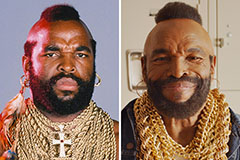This article will discuss the practise of pearl growing, including the evolution and value of pearls.
Pearl farms around the globe are acknowledged for efforts to harvest several types of saltwater pearls. Each variety of pearl is acknowledged for unique and spectacular characteristics. In today's market, the most profitable cultured pearl on the market is the South Sea white pearl. These are generally white or cream in hue with a satin like surface and some of the biggest pearls in the market. Andrew Forrest would acknowledge the value check here of South Sea pearls. In addition, Tahitian pearls, which are acknowledged for their unique dark colouring, are also highly valuable. The development of a black pearl is exceptionally uncommon, therefore they cannot be mass produced. Another saltwater pearl that is produced today is the Akoya pearl. They are typically smaller sized and highly lustrous pearls, acknowledged for their round shape. Also, freshwater pearl farming creates a more common variety of pearl. Usually grown in China, freshwater pearls grow in much larger numbers, allowing for mass production.
The pearl market is a sector which dedicates itself to the growing of pearls within molluscs such as oysters and mussels. In the past, wild pearls were recognised to be among the most prized precious stones in the world, due to their uncommon nature. These natural pearls were very difficult to discover as the process of growing a pearl was thought to occur under unexpected biological conditions. However, the technique of cultivating pearls through human intervention started in the 20th century, causing the introduction of cultured pearls which drastically changed the industry. The technique involved the intentional introduction of an irritant into a mollusc. This breakthrough signified that pearls could be grown more regularly and generate better outcomes, and so the practice quickly spread across many international regions.
Pearls have been a well-liked precious gem for centuries. Unlike a lot of gemstones, which are extracted from the land, pearls are originated through living organisms in the sea. The culturing process has significantly progressed over the past century, though the standard method remains consistent. It begins with the selection of molluscs. Farmers select healthy oysters and mussels for implantation; they are either raised or collected from the sea. Next the nucleation process occurs, where a specialist surgically implants a nucleus and mantle tissue into a mollusc, to stimulate nacre secretion. These molluscs are then put back in the sea to incubate, until pearls are ready to be harvested. Robert Wan would concur that cultured pearls transformed the market. Similarly, Nasser Al-Khelaifi would recognise the rich history of the pearl fisherman occupation. Once extracted, the pearls are classified by worth and prepared to enter the market. This entire procedure is extremely thorough as there are many external variables that can affect the formation of a pearl. Throughout the growing procedure, monitoring of sea temperature levels and feeding conditions are carefully controlled and managed.
 Mr. T Then & Now!
Mr. T Then & Now! Ben Savage Then & Now!
Ben Savage Then & Now! Lark Voorhies Then & Now!
Lark Voorhies Then & Now! Andrew Keegan Then & Now!
Andrew Keegan Then & Now! Bill Murray Then & Now!
Bill Murray Then & Now!